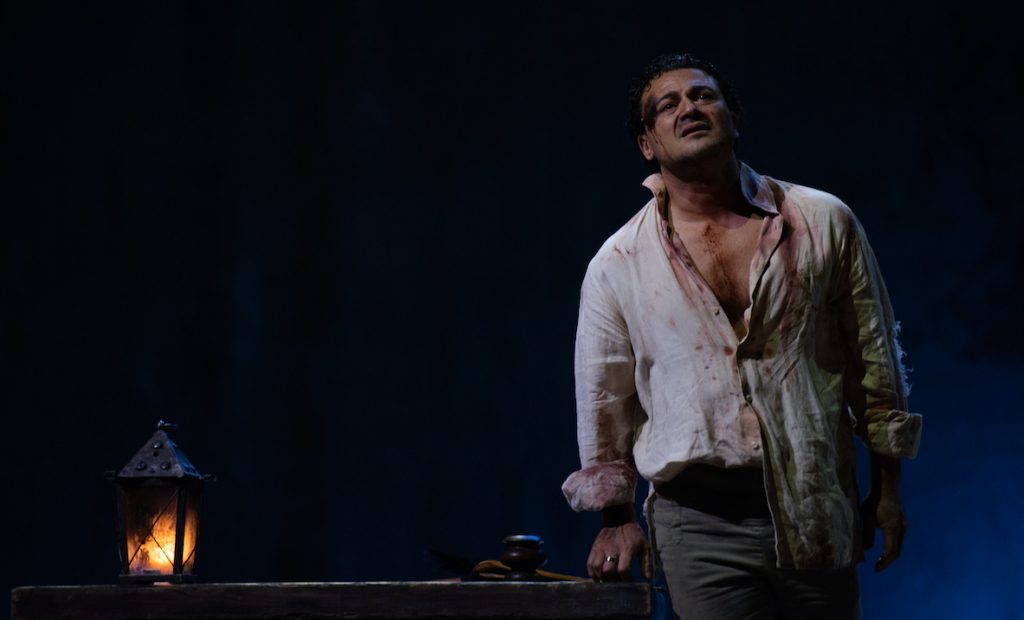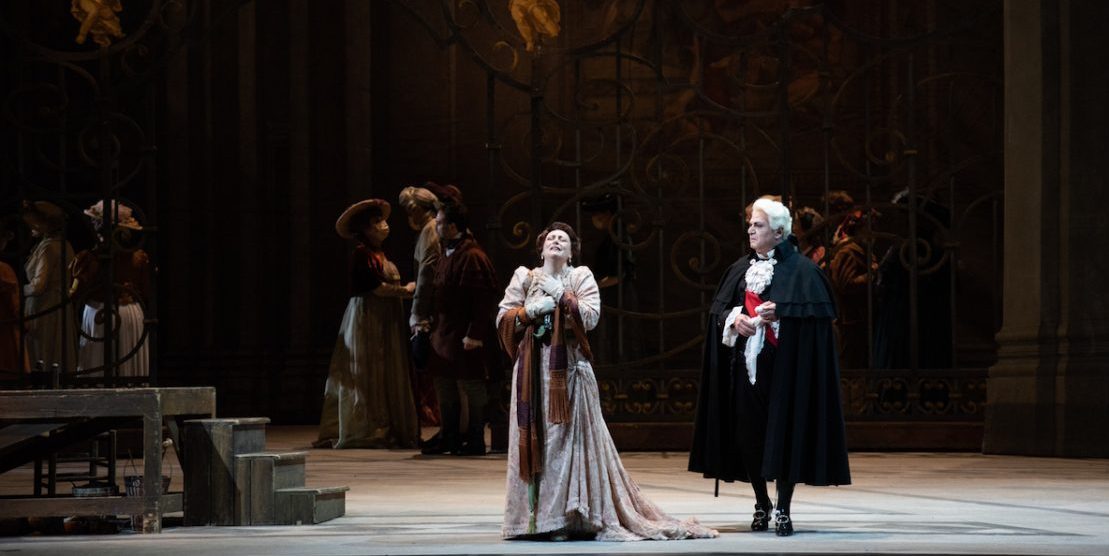This is one of the most performed operas. It was first staged in this opera house with the same set and costume in the presence of the composer Giacomo Puccini, the Italian Minister of Education, and that country’s Queen (Italy was a monarchy from 1861 to 1946). It was January the 14th 1900. Today, entering Teatro dell’Opera di Roma requires proof of full vaccination against COVID-19, temperature checks, and the wearing of a facemask. Despite the rigorous rules, the atmosphere was warm, and a buzz of excitement filled the air with anticipation. It was the opening night.
The opera’s narrative is set in Rome in 1800. It commences with a political episode – Angelotti a political fugitive hiding in the church Sant’Andrea della Valle, where his old friend and politically sympathiser, the artist, Mario Cavaradossi is painting the Madonna. These two facts impact the unfolding narrative – the painting of a beautiful woman, which triggers a bout of jealousy in Cavaradossi’s lover, Tosca, and Angelotti’s escape prompts Scarpia, the Chief of Police, to search for the political fugitive. Yet, Puccini insists the dramatic emphasis is on emotions and not politics, hence Cavaradossi’s final aria ‘E lucevan le stelle’ recalls merely his emotion of lost love. He recalls sweet kisses and tender caresses. There is no reference to the act of helping a political fugitive that brought on his misfortune.

Alessandro Talevi, the young director, who must use the 1900 design of set and costume, offers a new angle to stimulate a fresh reading of the score and libretto. The soprano, in the title role, is Saioa Hernández. She is a formidable performer. Her voice fills the auditorium with precision, timbre, and poignant texture that is almost hypnotic. Her Tosca is jealous, but her jealousy is coloured with humour. Much tenderness between her and her lover, Cavaradossi superbly performed by Vittorio Grigolo, is evident, and that seems part of the driving force that gets Scarpia (Roberto Frontali) to target the distraction of the man who has the love of the woman, he, Scarpia, desires most, but cannot obtain. Tosca and Cavaradossi, in this production, tower in every way over the character of Scarpia. He is not the engine but the dead front axle that drives the narrative.
Vittorio Grigolo’s Cavaradossi and Saioa Hernández’s Tosca project a couple in love, exuding alluring artistic and dramatic realism. Saioa Hernández is not only a superb soprano but also an impressive actress. Yet, her account of the great aria “Vissi d’arte” had the intensity but not the sensual depth of anguish that makes your hair stand on end. Hers was superb singing but it lacked the emotions music and words carry. On the other hand, Grigolo’s brought the House down with ‘E lucevan le stelle’ (“And the stars were shining”) in Act III. His rich and vibrant voice conveyed the physical sensation of anguish and when he sang ‘E muoio disperato!’ (And I die in desperation!), he was believable.
The ovation went on so long that, as is the custom here, Grigolo had to sing it again. What a beautiful send off! It was an extraordinary experience and an occasion one does not witness often. Cries of ‘bravo’ filled the auditorium and seemed most powerful from the Royal Box!
Roberto Frontali’s bass is underpowered for Scarpia and on more than one occasion, including when he admits that his lust for Tosca makes him forget God, he couldn’t be heard over the orchestra.
The Italian baritone Roberto Abbondanza performed humorously and wittingly the role of Sacristan. His excellent singing and acting are worth noting. Also fine performance from Luciano Leoni’s Angelotti and Saverio Fiore’s Spoletta.
The original set and costume are as impressive as they might have been nearly 122 years ago. The programme on offer for every opera is well worth getting. The content included is informative and makes an enjoyable read.
This was a truly fabulous night at the opera. 5* for enjoyment and 4* for performance.

